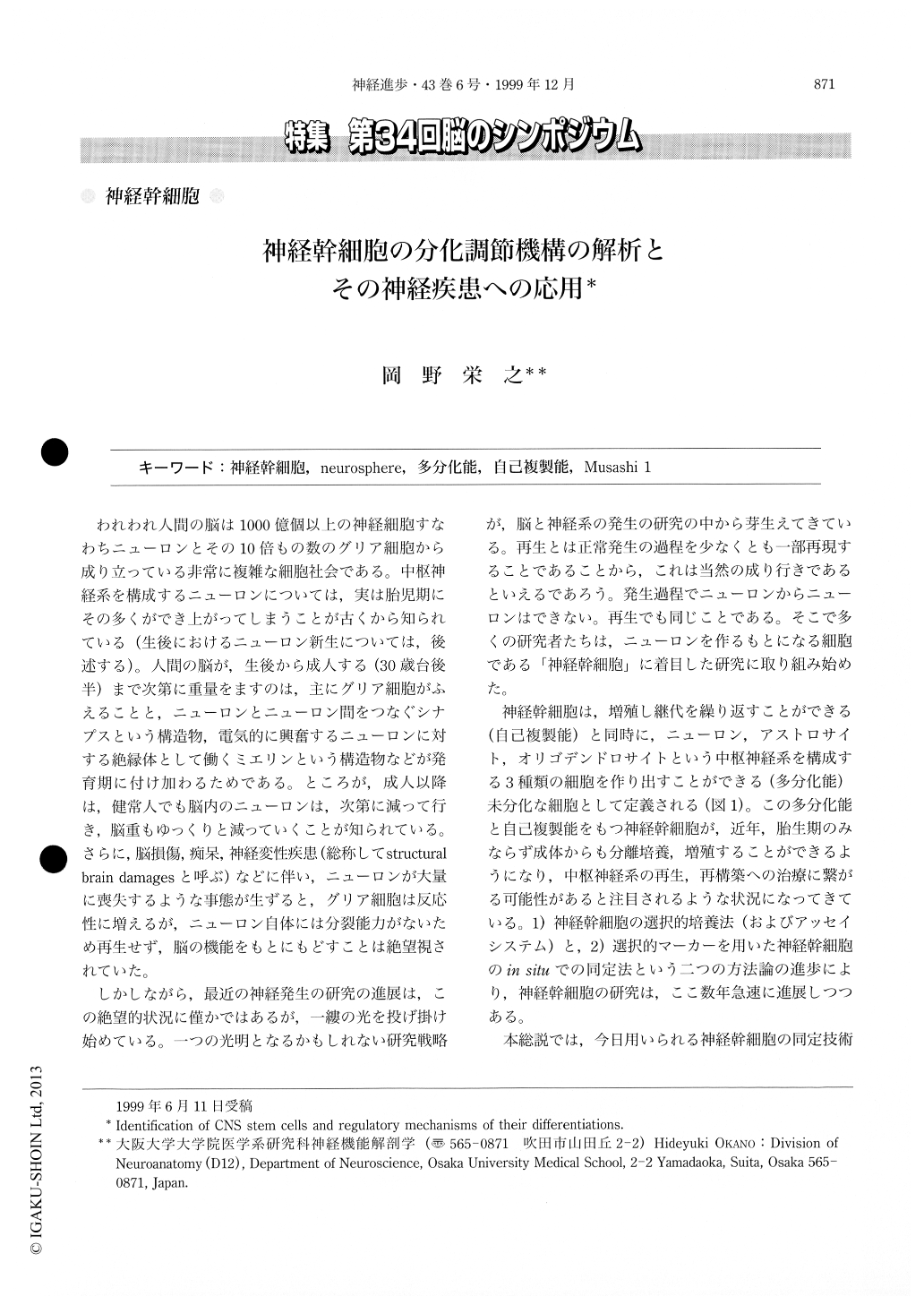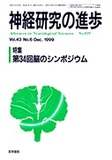Japanese
English
- 有料閲覧
- Abstract 文献概要
- 1ページ目 Look Inside
われわれ人間の脳は1000億個以上の神経細胞すなわちニューロンとその10倍もの数のグリア細胞から成り立っている非常に複雑な細胞社会である。中枢神経系を構成するニューロンについては,実は胎児期にその多くができ上がってしまうことが古くから知られている(生後におけるニューロン新生については,後述する)。人間の脳が,生後から成人する(30歳台後半)まで次第に重量をますのは,主にグリア細胞がふえることと,ニューロンとニューロン間をつなぐシナプスという構造物,電気的に興奮するニューロンに対する絶縁体として働くミエリンという構造物などが発育期に付け加わるためである。ところが,成人以降は,健常人でも脳内のニューロンは,次第に減って行き,脳重もゆっくりと減っていくことが知られている。さらに,脳損傷,痴呆,神経変性疾患(総称してstructuralbrain damagesと呼ぶ)などに伴い,ニューロンが大量に喪失するような事態が生ずると,グリア細胞は反応性に増えるが,ニューロン自体には分裂能力がないため再生せず,脳の機能をもとにもどすことは絶望視されていた。
Mammalian CNS stem cells are multipotential progenitor cells that have self-renewal activities. A single CNS stem cell is capable of generating various kinds of cells within the CNS, including neurons, astrocytes, and oligodendrocytes : multipotency. CNS stem cells can proliferate in an undifferentiated state both in vivo and in vitro, which is called “self-renewal”. Because of these characteristics, there is an increasing interest in CNS stem cells and neural progenitor cells in basic developmental biology and in possible therapeutic application to the structural brain damages.

Copyright © 1999, Igaku-Shoin Ltd. All rights reserved.


